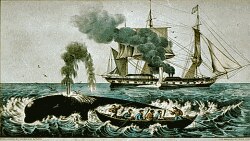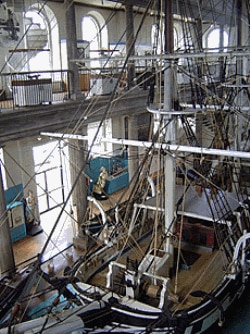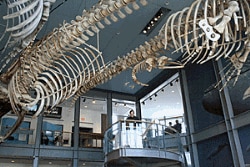The small city of New Bedford, Massachusetts, lies on Buzzard's Bay, which eventually feeds into the Atlantic Ocean. Blessed with this shielded deep water, New Bedford became the center of the world's whaling industry in the 1840s and '50s. It also became one of the world's richest places.
Whale oil lit America's lamps and greased our Industrial Revolution. And whale bone was used for everything from buggy whips to hair combs to spines in parasols. Whale bone is not really bone at all but keratin, carved from the hard plates inside the mouths of whales that the animals use to filter microorganisms from the sea.
By 1900, whaling was in decline. Petroleum replaced whale oil, and steel and synthetic materials were making whale bones obsolete. In 1903, the New Bedford area opened a little museum to preserve some of the relics of the epic whaling era. And 13 years later Emily Bourne, daughter of a great whaling captain, presented the museum with the world's largest model ship. It's half the size of her father's whaling bark named the Lagota.
That model became the featured attraction of what is now a greatly expanded New Bedford Whaling Museum. The museum is part of a fairly new national park, devoted to the search for whales that includes captains' mansions, an old ship chandlery, which is a store, and a seaman's bethel. A bethel is a small chapel used by sailors before they headed out on the daring and deadly quest for these giant sea mammals.
One voyage that the museum has documented lasted 11 years. When it ended, only three of the original 36 crew members were still on board.
The New Bedford Whaling Museum has accumulated more than 120,000 objects, from harpoons to ornate carvings on scrimshaw, or whalebone. Once a year, on the anniversary of the day author Herman Melville shipped out of New Bedford on a voyage that inspired his novel Moby Dick, volunteers read his classic aloud. It takes more than 24 straight hours to finish the enormous book.
Read more of Ted's personal reflections and stories from the road on his blog, Ted Landphair's America.







